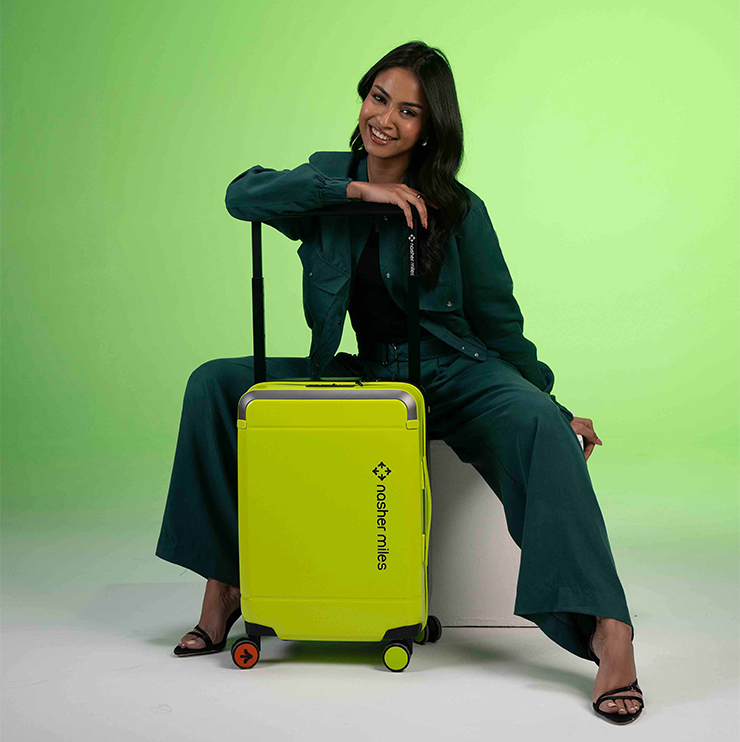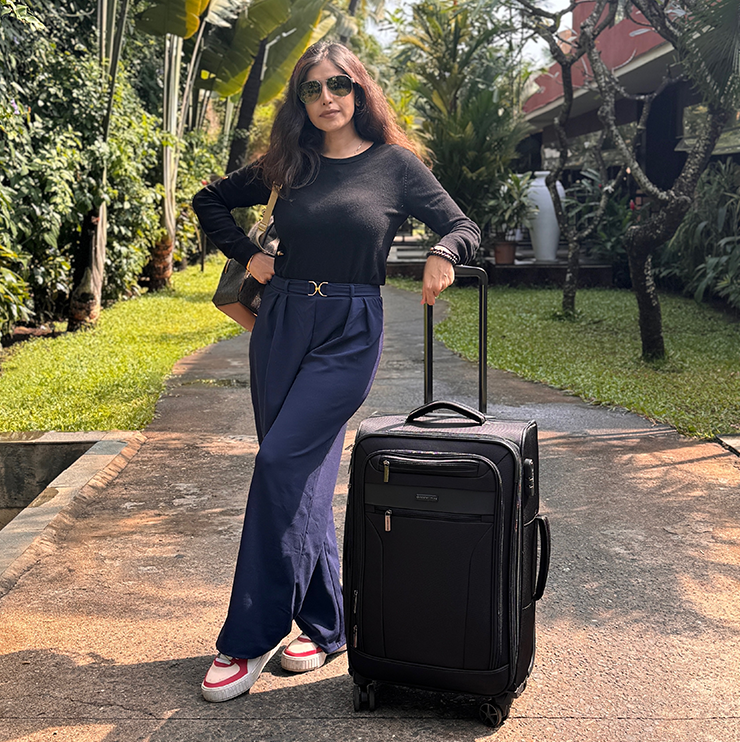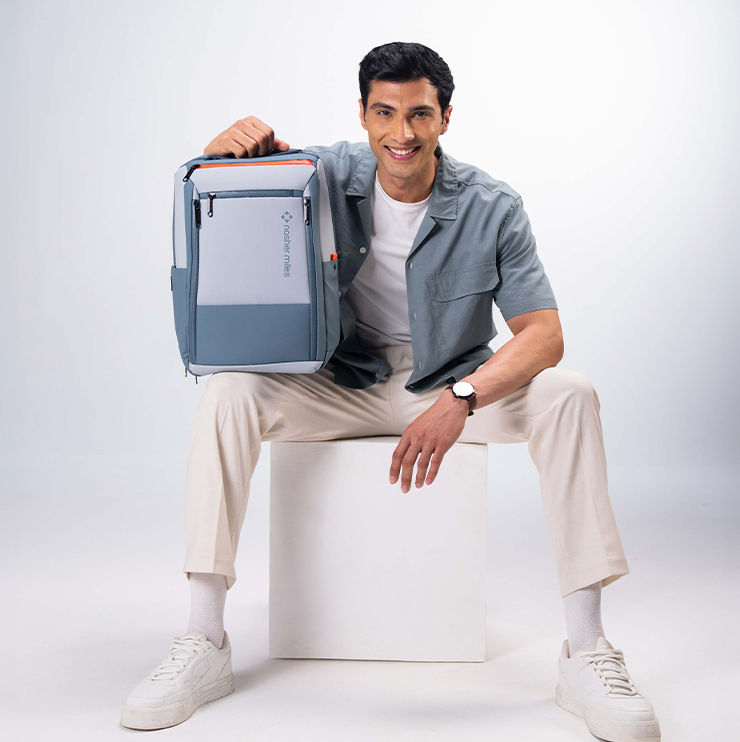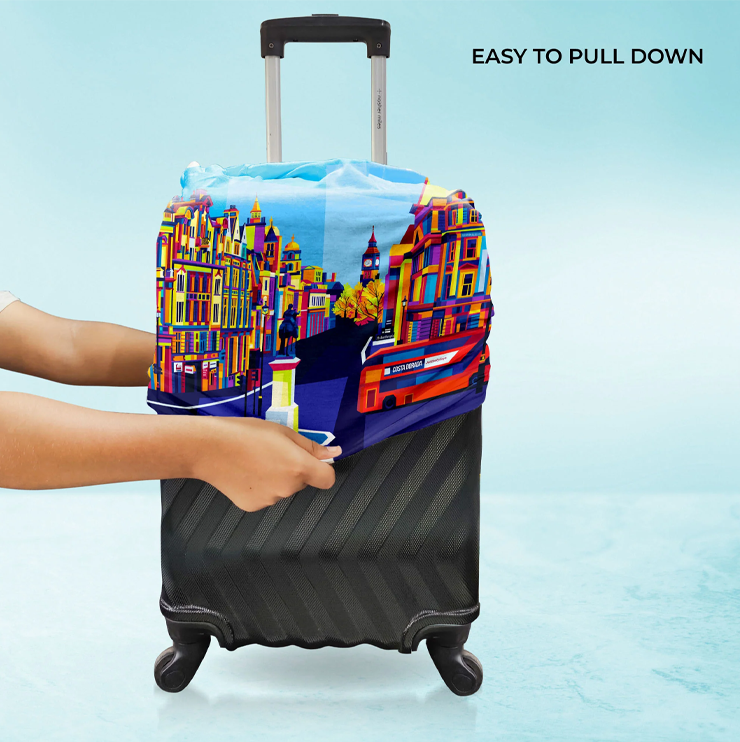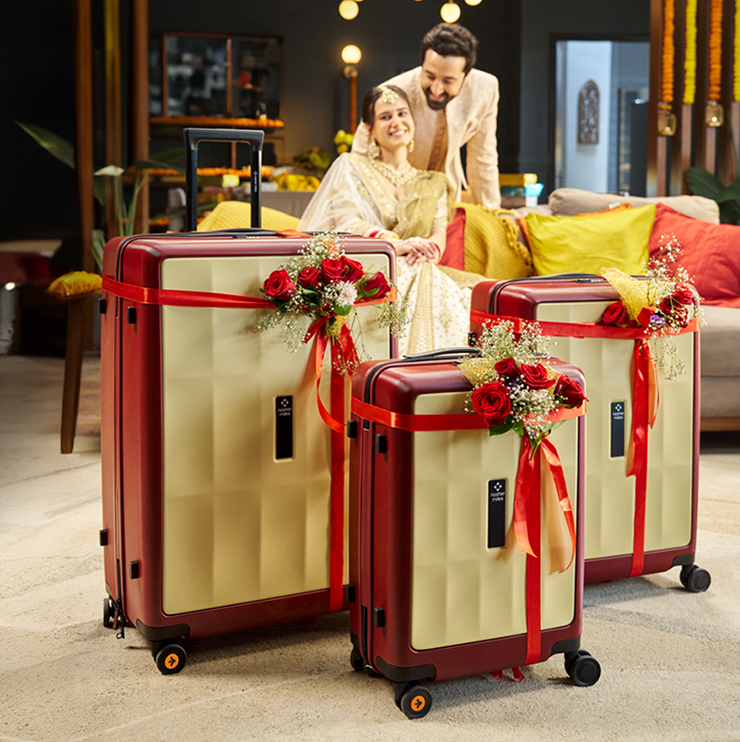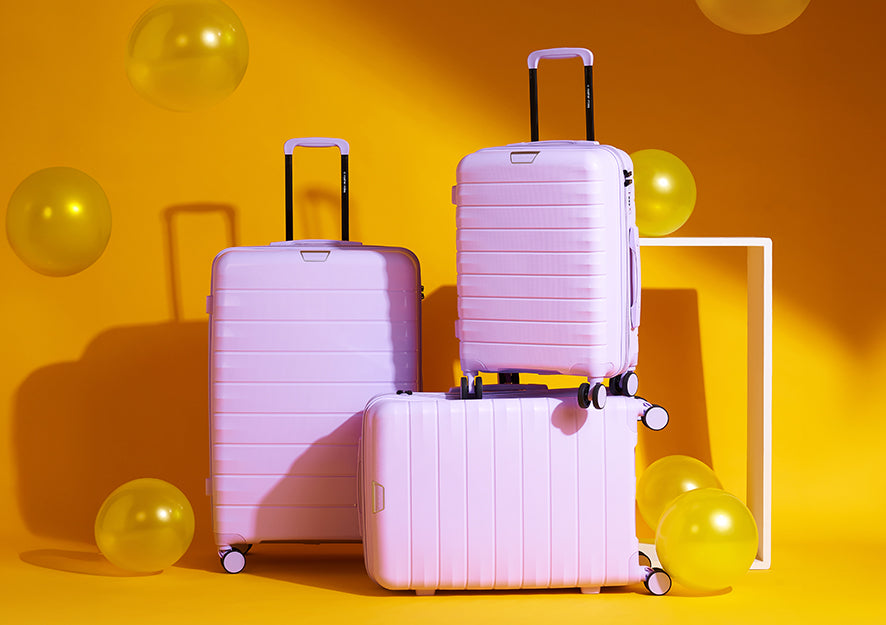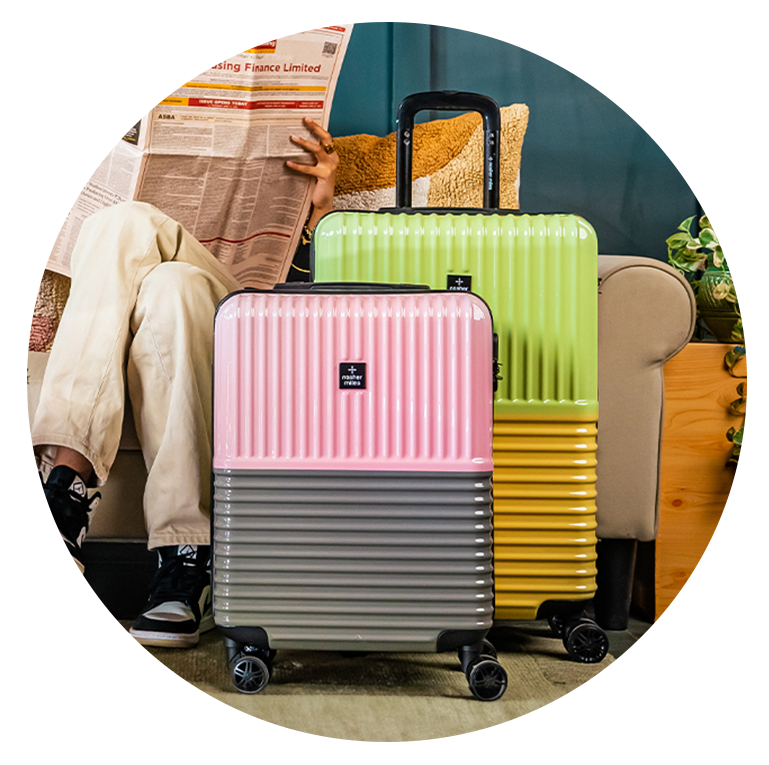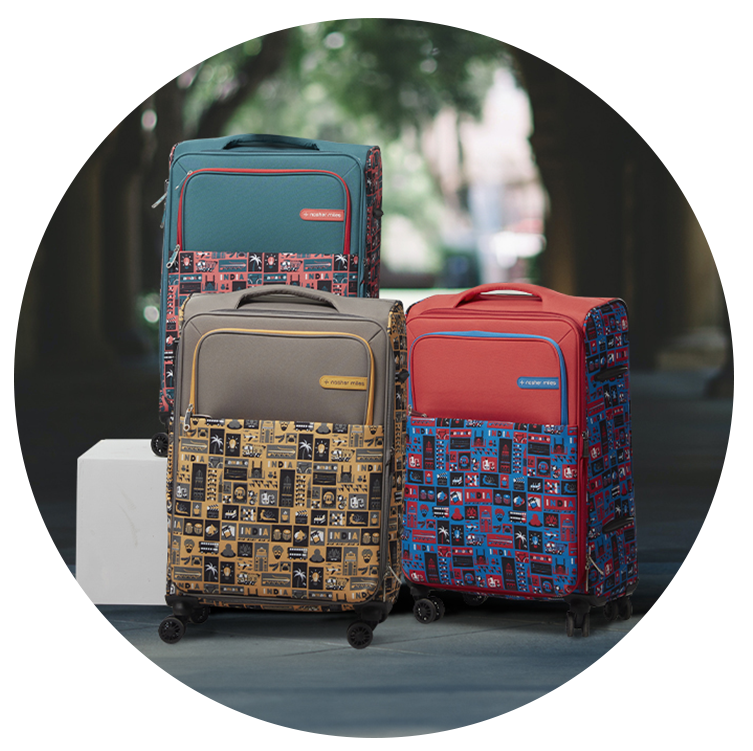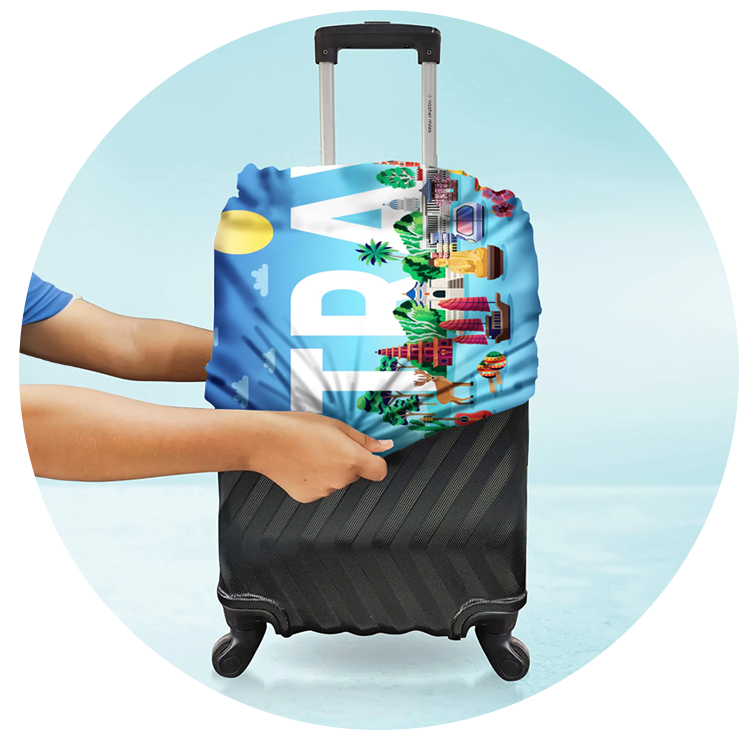What Counts as Cabin Baggage? Packing Tips to Maximize Every Inch

There are two kinds of people: those who overpack and those who pack smart. Most travellers pack their luggage just the night before the trip and end up either carrying more or less than they need. Packing smart for a weekend getaway or long trips can make all the difference, especially when you want to limit your luggage to just a cabin bag. A cabin bag means comfort, peace of mind, and travelling hands-free.
Whether you're headed to the beach or the mountains, knowing how to maximize space in your cabin bag will ensure you travel light, avoid stress, and breeze through airports.
In this blog, we will take a detailed look at cabin bags, including their size and how to maximize every inch of your cabin bag to pack smart and travel with ease.
What is a cabin bag? Know More About Cabin Baggage
Also known as carry-on bags, a cabin bag is the type of luggage you can take with you on a flight. Cabin bags are stored in the overhead compartment or under the seat. The weight of the cabin bag should be in the range of 7-10 kg, and this limit may vary from airline to airline.
Cabin bags provide easy access to your belongings throughout the flight. This bag is ideal for storing documents, medicines, or valuables, making them easily accessible whenever needed and reducing the risk of theft.
Browse through Nasher Mile’s Cabin Bags and choose your favourite for your next adventure. Whether you're travelling for work or leisure, our cabin-sized options strike the perfect balance between compactness and capacity. Choose from a wide range of stylish colour choices that best suit your personality, and let your luggage do the talking!
Why Cabin Baggage Rules Matter for Travelers
Adhering to the size and weight restrictions for cabin bags is crucial for smooth and secure air travel. This can also save you a hefty overweight fee. Airlines enforce specific size and weight restrictions to ensure uniformity in storage and passenger safety. In emergencies or during turbulence, overhead luggage poses a risk of spillage and causing harm. Failure to comply with these restrictions may result in severe consequences, such as denial of a boarding pass or additional charges.
What Size Is a Cabin Bag? Airline Regulations and Standards
A cabin-size bag refers to luggage with standard dimensions of 55 cm x 40 cm x 20 cm in length, width, and height, respectively, to fit in the overhead compartment. However, the dimensions may vary according to different airlines. This translates roughly to 115 linear Cms, where the sum of all the dimensions must not exceed this value.
What Items Can You Bring in Your Cabin Baggage?
One of the things you need to do before you travel is to check what items you can carry in your cabin bag. You can verify this by visiting the official airline website or by calling the airline's helpline.
Generally, you can pack clothes, electronics, personal care items, and medicines in your cabin bag. However, liquids must be sealed in containers smaller than 100 ml and placed in a clear, transparent, releasable bag. If needed, you can also carry valuables, such as jewellery, important documents, and fragile items, in your cabin bag.
If you are planning to do arts and crafts on board, you can carry scissors with rounded edges or blades less than 6 Cm. Other everyday items, such as umbrellas, canes, and even knitting needles, are allowed in the cabin bag.
Electronics such as laptops, hair straighteners, and travel razors are allowed; however, please check with the airlines before leaving home.
If you are planning to travel with kids, we have a wide variety of children’s cabin luggage designed especially for young travellers. From playful cartoon themes to lightweight, ergonomic designs with 360-degree wheels, our kids' luggage range makes packing fun and travel stress-free. These bags are so exciting and easy to handle that your little ones will want to roll them around everywhere, giving you one less thing to carry. Why should adults have all the fun?
Packing Tips to Maximize Every Inch of Your Cabin Baggage
To maximize the space in your cabin bag, roll your clothes instead of folding them, use packing cubes and compression bags, and fill all the empty spaces.
Here's a more detailed breakdown:
Clothing
-
Rolling: Rolling clothes takes less space than folding, especially for items like t-shirts, tops, and pants. This method also minimizes wrinkles.
-
Packing Cubes: Use packing cubes to compress clothes and keep them organized. Consider a compression cube for even greater space-saving benefits.
-
Compression Cubes: Vacuum compression bags can further reduce the bulk of clothes, especially for heavier items like jackets.
Space Optimization
-
Shoes: Fill your shoes with smaller items such as socks, underwear, or chargers.
-
Heavier Items at the Bottom: Place shoes, books, and other heavy items at the bottom of the suitcase to help maintain balance and distribute weight evenly.
-
Expandable Zippers: Utilize expandable zippers on your suitcase to accommodate extra space when needed.
Toiletries and Other Items
-
Travel-sized Containers: Pack travel-sized containers to save space and avoid excess baggage fees.
-
Separate Liquids: Keep liquids in separate bags to prevent spillage on other items.
How to Avoid Cabin Baggage Issues at the Airport?
To minimize baggage issues at the airport, follow airline size and weight restrictions, pack essentials separately in a small bag, and board early to secure overhead bin space. Ensure your carry-on fits under the seat or adheres to the airline’s allowance for a personal item, and keep valuables close to you, especially during the flight.
How to Choose the Perfect Cabin Bag?
To choose the perfect cabin bag, consider factors like airline regulations, trip duration, and personal preferences. Focus on size compliance, material durability, and features like comfortable handles, smooth wheels, and security locks. Lightweight, durable materials and multiple compartments are also helpful for organization.
We have something for everyone. A hard trolley bag doesn’t appeal to you? It’s all right; our soft cabin bag collection brings you ultra-light options with flexible compartments, front pockets for easy access, and sleek, professional aesthetics. Whether you prefer functionality or flair, you can find a cabin bag that reflects your style.
FAQs
1) What is the maximum size allowed for cabin baggage?
The maximum size allowed for cabin baggage is typically 56 x 36 x 23 Cm. This includes the length, width, height, handles, and wheels of the bag. Some airlines also allow personal items, such as laptop bags or handbags, with dimensions not exceeding 40 x 30 x 15 cm.
2) Can I carry liquids in my cabin baggage?
Yes, you can carry liquids in your cabin baggage, but there are restrictions in place. Liquids must be in containers no larger than 100 mL, and all containers must be placed in a transparent, resealable plastic bag with a capacity of no more than 1 litre.
3) How much weight can a cabin bag usually have?
Airlines typically allow a cabin bag to weigh around 7 kg (15 lbs), although this can vary depending on the airline and the specific flight. Some airlines might have a combined weight limit for a cabin bag and a personal item, so it's always best to check the specific restrictions of your chosen airline.
4) How to check if my cabin bag meets airline requirements?
To ensure your cabin bag meets airline requirements, you'll need to check both the size and weight limits, as well as the type of items allowed. Each airline has its own specific rules, so it's crucial to consult your airline's website or baggage guidelines for the most accurate information.
5) Are duty-free items allowed in cabin baggage?
Yes, duty-free items are generally permitted in cabin baggage, but they are often included in your overall cabin baggage allowance. Some airlines may consider duty-free purchases as part of your cabin baggage allowance, meaning they should fit within the weight and size limits of your allowed cabin luggage.














